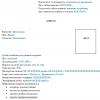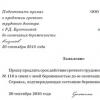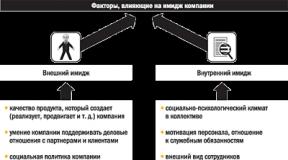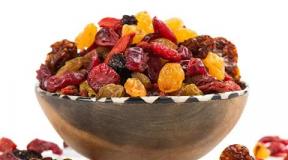Saliva secretion arising from receptor irritation. Saliva separation. Saliva secretion. Regulation of saliva secretion. Regulation of saliva secretion. Salivation center. A29. In plant breeding, pure lines are obtained by
1. Absorption. Intestinal absorption function. Transport of nutrients. Brush border of the enterocyte. Hydrolysis of nutrients.
2. Absorption of macromolecules. Transcytosis. Endocytosis. Exocytosis. Absorption of micromolecules by enterocytes. Absorption of vitamins.
3. Nervous regulation of the secretion of digestive juices and motility of the stomach and intestines. Reflex arc of the central esophageal - intestinal motor reflex.
4. Humoral regulation of the secretion of digestive juices and motility of the stomach and intestines. Hormonal regulation of the digestive tract.
5. Diagram of mechanisms of regulation of the functions of the gastrointestinal tract (GIT). Generalized diagram of the mechanisms of regulation of the functions of the digestive tract.
6. Periodic activity of the digestive system. Hungry periodic activity of the digestive tract. Migrating motor complex.
7. Digestion in the oral cavity and the function of swallowing. Oral cavity.
8. Saliva. Salivation. The amount of saliva. Saliva composition. Primary secret.
9. Separation of saliva. Saliva secretion. Regulation of saliva secretion. Regulation of saliva secretion. Salivation center.
10. Chewing. The act of chewing. Chewing regulation. Chewing center.
Saliva separation. Saliva secretion. Regulation of saliva secretion. Regulation of saliva secretion. Salivation center.
Saliva separation is a complex reflex act caused by irritation of the receptors in the oral cavity with food or other substances (unconditional reflex stimuli), as well as irritation of the visual and olfactory receptors appearance and the smell of food, the kind of environment in which food is consumed (conditioned reflex stimuli).
Excitation, arising from irritation of the mechano-, chemo- and thermoreceptors of the oral cavity, reaches the center of salivation in the medulla oblongata along the afferent fibers V, VII, IX, X pairs of cranial nerves. Efferent influences to the salivary glands come through parasympathetic and sympathetic nerve fibers. Preganlionic parasympathetic fibers to the sublingual and submandibular salivary glands are part of the tympanic string (branch of pair VII) to the sublingual and submandibular ganglia located in the body of the corresponding glands, and postganglionic fibers from these ganglia to the secretory cells and vessels of the glands. Preganglionic parasympathetic fibers go to the parotid glands from the lower salivary nucleus medulla oblongata as part of the IX pair of cranial nerves to the ear node, from which postganglionic fibers are directed to secretory cells and blood vessels.
Pregangional sympathetic fibers innervating the salivary glands are the axons of the lateral horn neurons II-VI of the thoracic segments spinal cord and end in the upper cervical ganglion. From here, postganglionic sympathetic fibers are directed to the salivary glands. Electrical irritation of the parasympathetic nerves in animal experiments causes abundant secretion of liquid saliva containing small amounts of organic matter, and the number of secretory granules decreases in glandulocytes. When the sympathetic nerves are stimulated, a small amount of thick and viscous saliva with a high content of enzymes and mucin is expelled from the salivary ducts, and the number of secretory granules increases in the glandulocytes. Concerning parasympathetic nerves called secretory, and sympathetic - trophic. In case of irritation of the receptors of the oral mucosa with food substances in animals and humans parasympathetic influences on the salivary glands predominate over the sympathetic, which causes profuse secretion of liquid saliva.
During a meal, the tactile, temperature and taste receptors of the oral mucosa are irritated. Afferent impulses from them along the sensory fibers of the trigeminal, glossopharyngeal, facial and vagus nerves reach salivary center of the medulla oblongata... When excited upper salivary center nucleus efferent impulses along the preganglionic parasympathetic fibers of the tympanic string reach the sublingual and mandibular ganglia, where they switch to the postganglionic, parasympathetic fibers of the hypoglossal nerve, which innervate the sublingual and submandibular salivary glands. When the lower salivary nucleus of the center is excited, efferent impulses along the preganglionic parasympathetic fibers of the glossopharyngeal nerve reach the ear ganglion, where they switch to the postganglionic fibers of the auricular nerve, which innervates the parotid salivary glands.
Under the influence of efferent impulses in the endings of parasympathetic postganglionic fibers, acetylcholine is released, which excites glandulocytes and expands blood vessels glands. Therefore, the secretory effect is accompanied by an increase in the level of blood supply to the gland.

The afferent impulses entering the medulla oblongata also excite sensitive neurons of a single beam, along the axons of which sensory impulses reach the nuclei of the thalamus, where they switch to the thalamocortical pathway and reach the cortical representation gustatory sensory system(in the area of the Roland groove). In the cerebral cortex, sensory information is switched to efferent cortical neurons, the axons of which transmit efferent impulses to the parasympathetic and sympathetic nuclei of the hypothalamus. Descending influences from the parasympathetic nuclei activate the bulbar salivary center, and from the sympathetic nuclei they activate preganglionic sympathetic neurons II-V of the thoracic segments of the spinal cord, where excitation switches to postganglionic fibers, at the endings of which norepinephrine is released.
Salivation centers reflexively they can not only be excited, but also inhibited. For example, during painful irritation, during negative emotions and during mental stress, salivation is sharply weakened or stopped ("dry in the mouth").
Pharmacological substances belonging to the group of cholinomimetics (for example, pilocarpine, proserin), increase salivation, as they promote the release of acetylcholine, and anticholinergics block (for example, atropine). Copious saliva flow observed with asphyxia due to irritation of the salivary center with carbonic acid.
Oral cavity is the initial section of the digestive tract, where the following is carried out: analysis of the taste properties of substances and their separation into food and rejected; protection of the digestive tract from the ingress of substandard nutrients and exogenous microflora; grinding, wetting food with saliva, initial hydrolysis of carbohydrates and the formation of a food lump; irritation of mecha-no-, chemo-, thermoreceptors, causing excitement of the activity of not only their own, but also digestive glands stomach, pancreas, liver, duodenum.
The oral cavity plays the role of an external barrier to protect the body from pathogenic microflora due to the presence of the bactericidal substance lysozyme (muromidase) in saliva, the antiviral effect of salivary nuclease, the ability of saliva immunoglobulin A to bind exotoxins, and also as a result of phagocytosis of leukocytes (4000 in 1 cm 3 of saliva) and oppression of pathogenic microflora by the normal flora of the oral cavity.
Salivary glands hormone-like substances are produced that are involved in the regulation of phosphorus-calcium metabolism of bones and teeth, in the regeneration of the epithelium of the mucous membrane of the oral cavity, esophagus, stomach and in the regeneration of sympathetic fibers when damaged.
Food is in the oral cavity for 16-18 seconds, and during this time the saliva secreted by the glands into the oral cavity wets dry substances, dissolves soluble and envelops solid ones, neutralizes irritating liquids or reduces their concentration, facilitates the removal of inedible (rejected) substances, washing them off oral mucosa.
The secretory function of the salivary glands. A person has three pairs of large salivary glands: parotid, sublingual, submandibular and, in addition, a large number of small glands, dissected
in the mucous membrane of the mouth. The salivary glands are composed of mucous and serous cells. The former secrete a mucoid secret of a thick consistency, the latter - liquid, serous or proteinaceous. The parotid salivary glands contain only serous cells. The same cells are found on the lateral surfaces of the tongue. Submandibular and sublingual - mixed glands, contain both serous and mucous cells. Similar glands are located in the mucous membrane of the lips, cheeks, and on the tip of the tongue. The sublingual and small glands of the mucous membrane secrete a secret constantly, and the parotid and submandibular - when they are stimulated.
From 0.5 to 2.0 liters of saliva is produced daily. Its pH ranges from 5.25 to 8.0. An important factor affecting the composition of saliva is the rate of its secretion, which in humans is 0.24 ml / min in the "resting" state of the salivary glands. However, the rate of secretion can fluctuate even at rest from 0.01 to 18.0 ml / min and increase when chewing food up to 200 ml / min.
The secret of the various salivary glands is not the same and varies depending on the nature of the stimulus. Human saliva is a viscous, opalescent, slightly turbid (due to the presence of cellular elements) liquid with a specific gravity of 1.001-1.017 and a viscosity of 1.10-1.33.
Mixed human saliva contains 99.4-99.5% water and 0.5-0.6% solid residue, which consists of inorganic and organic substances. Inorganic components are represented by ions of potassium, sodium, calcium, magnesium, iron, chlorine, fluorine, thiocyanate compounds, phosphate, chloride, sulfate, bicarbonate and make up about 1/3 of the solid residue.
Organic matter of the solid residue - proteins (albumin, globulins) free amino acids), nitrogen-containing compounds of non-protein nature (urea, ammonia, creatine), bactericidal substances - lysozyme (muramidase) and enzymes: alpha-amylase and maltase. Alpha-amylase is a hydrolytic enzyme and cleaves 1,4-glucosidic bonds in starch and glycogen molecules to form dextrins, and then maltose and sucrose. Maltose (glucosidase) breaks down maltose and sucrose into monosaccharides. In saliva, there are also small amounts of other enzymes - proteases, peptidases, lipases, alkaline and acidic phosphatases, RNAases, etc. The viscosity and licking properties of saliva are due to the presence of mucopolysaccharides (mucin).
The mechanism of saliva formation. Saliva is formed both in the acini and in the ducts of the salivary glands. The cytoplasm of glandular cells contains secretory granules located mainly in the perinuclear and apical parts of the cells, near the Golgi apparatus. In mucous and serous cells, granules differ both in size and in chemical nature. In the course of secretion, the size, number and location of the granules change, the Golgi apparatus acquires a sharper outline. As the secretory granules mature, they move from the Golgi apparatus to the apex
cells. In the granules, the synthesis of organic substances is carried out, which move with water through the cell along the endoplasmic reticulum. In the course of secretion, the amount of colloidal material in the form of secretory granules gradually decreases and is renewed during the rest period.
In the acini of the glands, the first stage of the formation of saliva is carried out - primary secret, containing alphaamylase and mucin. The content of ions in the primary secretion slightly differs from their concentration in extracellular fluids. In the salivary ducts, the composition of the secretion changes significantly: sodium ions are actively reabsorbed, and potassium ions are actively secreted, but at a lower rate than sodium ions are absorbed. As a result, the concentration of sodium in saliva decreases, while the concentration of potassium ions increases. The significant predominance of reabsorption of sodium ions over the secretion of potassium ions increases the electronegativity in the salivary ducts (up to 70 mV), which causes passive reabsorption of chlorine ions, a significant decrease in the concentration of which at the same time is associated with a decrease in the concentration of sodium ions. At the same time, the secretion of bicarbonate ions by the epithelium of the ducts into the lumen of the ducts increases.
Regulation of salivation. The separation of saliva is a complex reflex act carried out due to irritation of the receptors in the oral cavity with food or other substances. (unconditionally reflex stimuli), as well as irritation of the visual and olfactory receptors by the appearance and smell of food, the type of environment in which food is eaten (conditioned reflex irritants).
Excitation arising from irritation of the mechano-, chemo- and thermoreceptors of the oral cavity reaches the center of salivation in the medulla oblongata along the afferent fibers V, VII, IX, X pairs of cranial nerves. Efferent influences to the salivary glands come through parasympathetic and sympathetic nerve fibers. Preganglionic parasympathetic fibers to the sublingual and submandibular salivary glands go as part of the tympanic string (branch of pair VII) to the sublingual and submandibular ganglia located in the body of the corresponding glands, postganglionic fibers - from these ganglia to the secretory cells and vessels of the glands. To the parotid glands, preganglionic parasympathetic fibers go from the lower salivary nucleus of the medulla oblongata as part of the IX pair of cranial nerves. From the ear node, postganglionic fibers are directed to secretory cells and blood vessels.
The preganglionic sympathetic fibers innervating the salivary glands are axons of the neurons of the lateral horns of the II-VI thoracic segments of the spinal cord and end in the superior cervical ganglion. From here, postganglionic fibers are directed to the salivary glands. Irritation of the parasympathetic nerves is accompanied by an abundant secretion of liquid saliva containing small
high amounts of organic matter. When the sympathetic nerves are irritated, a small amount of saliva is secreted, which contains mucin, which makes it thick and viscous. In this regard, the parasympathetic nerves are called secretory, and sympathetic - trophic. With "food" secretion, parasympathetic influences on the salivary glands are usually stronger than sympathetic ones.
Regulation of the volume of water and the content of organic matter in saliva is carried out salivary center. In response to stimulation of the mechano-, chemo- and thermoreceptors of the oral cavity with various food or rejected substances, bursts of impulses differing in frequency are formed in the afferent nerves of the arc of the salivary reflex.
A variety of afferent impulses, in turn, is accompanied by the appearance of a mosaic of excitation in the salivary center, corresponding to the frequency of impulses, and different efferent impulses to the salivary glands. Reflex influences inhibit salivation until it stops. Inhibition can be caused by pain irritation, negative emotions, etc.
The appearance of salivation at the sight and (or) smell of food is associated with the participation in the process of the corresponding zones of the cerebral cortex, as well as the anterior and posterior groups of the hypothalamic nuclei (see Chapter 15).
The reflex mechanism is the main, but not the only mechanism of arousal of salivation. The secretion of saliva is influenced by hormones of the pituitary gland, pancreas and thyroid glands, sex hormones. Abundant salivation is observed during asphyxia due to irritation of the salivary center with carbonic acid. Salivation can be stimulated by vegetotropic pharmacological substances(pilocarpine, pro-zerin, atropine).
Chewing.Chewing- a complex physiological act, consisting in grinding food substances, wetting them with saliva and forming a food lump. Chewing ensures the quality of mechanical and chemical processing of food and determines the time of its stay in the oral cavity, has a reflex effect on the secretory and motor activity of the digestive tract. Chewing involves the upper and lower jaw, chewing and mimic muscles of the face, tongue, soft palate and salivary glands.
Chewing is regulated reflexively. Excitation from the receptors of the oral mucosa (mechano-, chemo- and thermoreceptors) is transmitted along the afferent fibers of the II, III branches of the trigeminal, glossopharyngeal, superior laryngeal nerve and tympanic cord to the center of chewing, which is located in the medulla oblongata. Excitation from the center to the masticatory muscles is transmitted through the efferent fibers of the trigeminal, facial and hypoglossal nerves. The ability to arbitrarily regulate the chewing function suggests that there is a cortical regulation of the chewing process. In this case, excitation from the sensitive nuclei of the brain stem along
the afferent pathway through the specific nuclei of the thalamus switches to the cortical section of the taste analyzer (see Chapter 16), where, as a result of the analysis of the information received and the synthesis of the stimulus image, the question of the edibility or inedibility of the substance entering the oral cavity is resolved, which affects the nature of the movements of the masticatory apparatus.
In infancy, the process of chewing corresponds to sucking, which is provided by reflex contraction of the muscles of the mouth and tongue, which create a vacuum in the oral cavity within the range of 100-150 mm of water column.
Swallowing. Swallowing- a complex reflex act by which food is transferred from the mouth to the stomach. The act of swallowing is a chain of successive interconnected stages that can be divided into three phases: (1) oral(arbitrary), (2) pharyngeal(involuntary, fast) and (3) esophageal(involuntary, slow).
Food lump(with a volume of 5-15 cm 3) with coordinated movements of the cheeks and tongue moves to the root of the tongue, behind the anterior arches of the pharyngeal ring (first phase). From this point on, the act of swallowing becomes involuntary (Figure 9.1). Irritation by the food lump of the receptors of the mucous membrane of the soft palate and pharynx is transmitted along the glossopharyngeal nerves to the swallowing center in the medulla oblongata, efferent impulses from which go to the muscles of the oral cavity, pharynx, larynx and esophagus along the fibers of the hypoglossal, trigeminal, glossopharyngeal and vagus nerves, which is provided the occurrence of a coordinated contraction of the muscles of the tongue and muscles that raise the soft palate. Due to this, the entrance to the nasal cavity from the side of the pharynx is closed with a soft palate and the tongue moves the food lump into the pharynx. At the same time, the hyoid bone is displaced, the larynx rises, and as a result, the epiglottis closes the entrance to the larynx. This prevents food from entering the Airways... At the same time, the upper esophageal sphincter opens - a thickening of the muscular membrane of the esophagus, formed by circular fibers in the upper half of the cervical part of the esophagus, and the food bolus enters the esophagus (second phase). The upper esophageal sphincter contracts after the food bolus enters the esophagus, preventing the esophageal-pharyngeal reflex.
Third phase swallowing - the passage of food through the esophagus and its transfer to the stomach. The esophagus is a powerful reflexogenic zone. The receptor apparatus is represented here mainly by mechanoreceptors. Due to the irritation of the latter with a food lump, a reflex contraction of the esophageal muscles occurs. In this case, the annular muscles are sequentially reduced (with simultaneous relaxation of the underlying muscles). Waves of contractions (called peristaltic) consistently spread towards the stomach, moving the food lump. The speed of propagation of the food wave is 2 - 5 cm / s. The contraction of the muscles of the esophagus is associated with
Figure 9.1. Swallowing process.
receipt from the medulla oblongata of efferent impulses along the fibers of the recurrent and vagus nerves.
The movement of food through the esophagus is due to a number of factors. First, the pressure difference between the pharyngeal cavity and the beginning of the esophagus is from 45 mm Hg. in the pharyngeal cavity (at the beginning of swallowing) up to 30 mm Hg. (in the esophagus). Secondly, the presence of peristaltic contractions of the muscles of the esophagus, thirdly, the tone of the muscles of the esophagus, which is almost three times lower in the thoracic region than in the cervical region, and, fourthly, by the gravity of the food bolus. The speed of passage of food through the esophagus depends on the consistency of food: dense passes in 3-9 s, liquid - in 1-2 s.
The center of swallowing through the reticular formation is connected with other centers of the medulla oblongata and the spinal cord, the excitation of which at the time of swallowing causes inhibition of the activity of the respiratory center and a decrease in the tone of the vagus nerve. This is accompanied by respiratory arrest and increased heart rate.
In the absence of swallowing contractions, the entrance from the esophagus into the stomach is closed - the muscles of the cardiac part of the stomach are in
state of tonic contraction. When the peristaltic wave and lump of food reaches the end of the esophagus, the muscle tone of the cardiac stomach decreases and the lump of food enters the stomach. When the stomach is filled with food, the tone of the cardiac muscles increases and prevents the reverse flow of gastric contents from the stomach into the esophagus.
Food processing begins in the mouth. Here, it is ground, the taste properties of food are analyzed, wetted with saliva, the initial hydrolysis of polysaccharides (starch) and the formation of a food lump. The average duration of the stay of food in the oral cavity is 15 - 18 s.
Food ingested into the mouth irritates taste, tactile and temperature receptors, which are located in the mucous membrane of the walls of the oral cavity, primarily the tongue. Signals from these receptors travel along sensory (centripetal) nerve fibers to the corresponding centers of the brain. Nerve impulses from these centers in the composition of motor and secretory (centrifugal) nerve fibers go to the glands and individual secretory cells, causing the secretion of the salivary and other glands, as well as the reaction of the muscles of the digestive system.
Salivation. In the oral cavity, crushed food is mixed with saliva, which is secreted by three pairs of large salivary glands: parotid, submandibular, sublingual - and many small glands located in the mucous membrane of the walls of the oral cavity. 0.5 - 2.0 liters of saliva are produced per day.
The composition and properties of saliva. Saliva is a cloudy liquid. Her reaction is slightly alkaline. Saliva contains 98.5 - 99.5% water and 1.5 - 0.5% dry matter. The main part of dry matter is mucin. Mucin promotes the formation, adhesion of a food lump and facilitates its entry from the oral cavity into the pharynx. In addition to mucin, saliva contains the enzymes amylase, maltose and ions Na +, K + Ca +, C1 - and others. Under the influence of the amylase enzyme in alkaline environment splitting of starch into disaccharides (maltose) begins. Different food substances cause saliva separation of different quantity and quality.
Regulation of salivation. Eating food causes salivation reflexively. Signals from the receptors in the oral cavity are transmitted to the salivary centers via the sensory (afferent) nerve fibers in the trigeminal, facial, glossopharyngeal and vagus nerves. The neurons of the salivary centers are located in the brain stem and in the gray matter of the thoracic segments of the lateral horns of the spinal cord. From here, signals are sent through parasympathetic (from the trunk) and sympathetic (from the spinal cord) fibers to the salivary glands. The endings of the parasympathetic fibers release a biologically active substance - acetylcholine, which excites the secretory cells of the salivary glands. This produces a large amount of liquid saliva. The endings of the sympathetic nerve fibers secrete norepinephrine. Under its influence, a small amount of thick saliva is formed.
The separation of saliva, which occurs when the mechanical, chemical and temperature receptors of the oral cavity are irritated, is called unconditioned salivary reflex
Along with the unconditioned salivary reflex, there are conditioned salivary reflexes in response to visual, olfactory, auditory and other stimuli (sight, smell of food, etc.). The possibility of conditioned reflex saliva separation was proved by the outstanding Russian physiologist I.P. Pavlov, who showed that saliva is secreted not only when food enters the oral cavity, but also when food is seen or talked about.
The scientist performed the following experiment: without disturbing digestion, he brought the end of the dog's salivary gland duct to outer surface cheeks (Fig. 67).
Rice. 67. A dog with a parotid fistula. A test tube for collecting saliva is attached to the cheek in the area of the opening of the duct brought out to the outside.
In this case, saliva from this gland was released not into the oral cavity, but outside. This experiment established that salivation begins even before food enters the oral cavity.
Swallowing- a reflex act. Chewed food moistened with saliva turns into a food lump, which, with the movements of the tongue, lips and cheeks, falls on the root of the tongue. The root of the tongue and the soft palate have a large number of sensitive nerve endings. The irritation caused by food is transmitted to the medulla oblongata to the neurons of the swallowing center. From here nerve impulses along the motor (efferent) nerve fibers in the glossopharyngeal and vagus nerves go to the muscles of the pharynx and larynx, causing the act of swallowing. At this moment, breathing is held, the entrance to the nasal cavity is closed with a soft palate, the epiglottis closes the entrance to the larynx. If a person talks while eating, then the entrance from the pharynx to the larynx does not close and food can get into the lumen of the larynx, into the respiratory tract.That's why you can't talk while eating. From the oral cavity, the food lump enters the initial part of the pharynx and is pushed into the esophagus by strong contraction of its muscles. The wave-like contraction of the mouse esophagus moves food into the stomach. Solid food travels all the way from the mouth to the stomach in 6 - 8 s, and liquid food - in 2 - 3 s.
(Answers at the end of the test)
A1. What science classifies organisms on the basis of their relationship?
1) ecology
2) taxonomy
3) morphology
4) paleontology
A2. What theory was formulated by the German scientists M. Schleiden and T. Schwann?
1) evolution
2) chromosomal
3) cellular
4) ontogenesis
A3. The storage carbohydrate in the animal cage is
1) starch
2) glycogen
4) cellulose
A4. How many chromosomes are there in the germ cells of the fruit fly Drosophila, if its somatic cells contain 8 chromosomes?
A5. The insertion of its nucleic acid into the DNA of the host cell is carried out
1) bacteriophages
2) chemotrophs
3) autotrophs
4) cyanobacteria
A6. Sexual reproduction of organisms is evolutionarily more progressive, since it
1) contributes to their wide distribution in nature
2) provides a rapid increase in population
3) promotes the emergence of a wide variety of genotypes
4) maintains the genetic stability of the species
A7. What is the name of individuals that form one variety of gametes and do not give splitting signs in offspring?
1) mutant
2) heterotic
3) heterozygous
4) homozygous
A8. How are the genotypes of individuals designated during dihybrid crossing?
A9. All leaves of the same plant have the same genotype, but may differ in
1) the number of chromosomes
2) phenotype
3) gene pool
4) genetic code
A10. What bacteria improve nitrogen nutrition in plants?
1) fermentation
2) nodule
3) acetic acid
A11. An underground shoot differs from a root by the presence of
2) growth zones
3) vessels
A12. Plants of the angiosperm division, in contrast to gymnosperms,
1) have a root, stem, leaves
2) have a flower and a fruit
3) reproduce by seeds
4) release oxygen into the atmosphere during photosynthesis
A13. In birds, unlike reptiles,
1) inconsistent body temperature
2) a cover of the horny substance
3) constant body temperature
4) reproduction by eggs
A14. What group of tissues has the properties of excitability and contractility?
1) muscular
2) epithelial
3) nervous
4) connecting
A15. The main function of the kidneys in mammals and humans is to remove from the body
2) excess sugar
3) metabolic products
4) undisturbed residues
A16. Human phagocytes are capable of
1) capture foreign bodies
2) produce hemoglobin
3) participate in blood clotting
4) transfer antigens
A17. Bundles of long processes of neurons, covered with a connective tissue sheath and located outside the central nervous system, form
2) cerebellum
3) spinal cord
4) cerebral cortex
A18. What vitamin should be included in a person's diet in order not to get scurvy?
A19. What criterion of the species should be attributed to the area of distribution in the tundra of the reindeer?
1) environmental
2) genetic
3) morphological
4) geographical
A20. An example of an interspecies struggle for existence is the relationship between
1) an adult frog and a tadpole
2) the cabbage butterfly and its caterpillar
3) the songbird and the fieldberry
4) wolves of the same pack
A21. The layered arrangement of plants in the forest serves as an adaptation to
1) cross-pollination
2) wind protection
3) the use of light energy
4) reduce water evaporation
A22. Which of the factors of human evolution is of a social nature?
1) articulate speech
2) variability
3) natural selection
4) heredity
A23. What is the nature of the relationship of organisms different types needing the same food supply?
1) predator - prey
3) competition
4) mutual assistance
A24. In the biogeocenosis of the flooded meadow, decomposers include
1) cereals, sedges
2) bacteria and fungi
3) murine rodents
4) herbivorous insects
A25. Can lead to global changes in the biosphere
1) an increase in the number of certain species
2) desertification of territories
3) heavy rainfall
4) replacement of one community by another
A26. What percentage of nucleotides with cytosine does DNA contain if the fraction of its adenine nucleotides is 10% of the total?
A27. Choose the correct sequence of information transmission in the process of protein synthesis in the cell.
1) DNA → messenger RNA → protein
2) DNA → transport RNA → protein
3) ribosomal RNA → transport RNA → protein
4) ribosomal RNA → DNA → transport RNA → protein
A28. With dihybrid crossing and independent inheritance of traits in parents with genotypes AABb and aabb, a splitting is observed in the offspring in the ratio
A29. In plant breeding, pure lines are obtained by
1) cross-pollination
2) self-pollination
3) experimental mutagenesis
4) interspecific hybridization
A30. Reptiles are considered true terrestrial vertebrates, since they
1) breathe atmospheric oxygen
2) breed on land
3) lay eggs
4) have lungs
A31. Carbohydrates in the human body are stored in
1) liver and muscles
2) subcutaneous tissue
3) pancreas
4) intestinal walls
A32. The separation of saliva that occurs when the receptors in the oral cavity are irritated is a reflex
1) conditional, requiring reinforcement
2) unconditional, inherited
3) arising during the life of a person and an animal
4) individual for each person
A33. Among the listed examples, aromorphosis is
1) flat shape bodies at the stingray
2) protective coloration in a grasshopper
3) four-chambered heart in birds
A34. The biosphere is an open ecosystem, as it
1) consists of many diverse ecosystems
2) is influenced by anthropogenic factors
3) includes all areas of the earth
4) constantly uses solar energy
The answer to the tasks of this part (B1-B8) is a sequence of letters or numbers.
In tasks B1-B3, choose three correct answers out of six, write down the selected numbers in the table.
IN 1. Biological significance meiosis is
1) preventing the doubling of the number of chromosomes in the new generation
2) the formation of male and female gametes
3) the formation of somatic cells
4) creating opportunities for the emergence of new gene combinations
5) increasing the number of cells in the body
6) a multiple increase in the set of chromosomes
IN 2. What is the role of the pancreas in the human body?
1) participates in immune reactions
2) forms blood cells
3) is a gland of mixed secretion
4) forms hormones
5) secretes bile
6) secretes digestive enzymes
AT 3. The factors of evolution include
1) crossing over
2) mutation process
3) modification variability
4) isolation
5) variety of species
6) natural selection
When performing tasks B4-B6, establish a correspondence between the contents of the first and second columns. Enter the numbers of the selected answers in the table.
AT 4. Establish a correspondence between the plant trait and the department for which it is characteristic.
AT 5. Establish a correspondence between the feature of the structure and function of the human brain and its department.
AT 6. Establish a correspondence between the nature of the mutation and its type.
When performing tasks B7-B8, set the correct sequence biological processes, phenomena, practical actions. Write down the letters of the selected answers in the table.
AT 7. Establish the sequence of the processes occurring in the interphase cell.
A) mRNA is synthesized on one of the DNA strands
B) a section of the DNA molecule under the influence of enzymes is split into two chains
C) mRNA moves into the cytoplasm
D) protein synthesis occurs on mRNA, which serves as a matrix
AT 8. Establish in what chronological order the main groups of plants appeared on Earth.
A) green algae
B) horsetail
C) seed ferns
D) rhinophytes
D) gymnosperms
Answer | Answer |
||
Answer | Answer |
||
the appearance and smell of food, the nature of the environment in which food is consumed (conditioned reflex mechanisms) (Fig. 6.17).
The quantity and quality of saliva separated depends on the state of the internal environment of the body, the level of excitability of the food, thermoregulatory and other nerve centers.
Salivation center represented by a set of neurons in the cortex, hypothalamus, medulla oblongata and spinal cord.
Excitation arising from irritation of mechano-, thermo-, chemo- and osmoreceptors of the digestive system reaches the sensory nuclei of the center of salivation of the medulla oblongata along afferent fibers V, VII, IX, X pairs of cranial nerves.
Efferent influences the salivary glands are delivered through the parasympathetic and sympathetic nerve fibers. Pre-ganglionic parasympathetic fibers to the sublingual and submandibular salivary glands go from the upper salivary nucleus as part of the tympanic string (branch of the VII pair) to the sublingual and submandibular ganglia located in the body of the corresponding glands; postganglionic - from these ganglia to the secretory cells and vessels of the glands. To the parotid glands, preganglionic parasympathetic fibers go from the lower salivary nucleus of the medulla oblongata as part of the IX pair of cranial nerves to the ear node, from where the postganglionic fibers are directed to the secretory cells and vessels of the glands.
The preganglionic sympathetic fibers innervating the salivary glands are axons of the neurons of the lateral horns of the II-VI thoracic segments of the spinal cord and end in the superior cervical ganglion. From here, postganglionic fibers are directed to the salivary glands.
Irritation of the parasympathetic nerves is accompanied by an abundant secretion of liquid saliva containing small amounts of organic matter ("washing saliva"). When the sympathetic nerves are irritated, a small amount of saliva is secreted, which contains enzymes and mucin that make it thick and viscous. In this regard, the parasympathetic nerves are called secretory, and the sympathetic - trophic. With "food" secretion, parasympathetic influences on the salivary glands are usually more pronounced than sympathetic ones.
In response to stimulation of the mechano-, chemo- and thermoreceptors of the oral cavity with various food or rejected substances, volleys of impulses differing in frequency are formed in the afferent nerves. A variety of afferent impulses, in turn, is accompanied by the appearance of a mosaic of excitation in the salivary center and, as a result,
as a result of this, different efferent impulses to the salivary glands.
The enzymatic composition and properties of saliva change with the age of a person and depend on the diet and type of food. More viscous saliva is secreted for nutrients. Its volume is the greater, the drier the food. A significant amount of more liquid saliva is released on the rejected substances - acids, bases, bitterness. The adaptation of salivation to the type of food is expressed not only in changes in the volume and viscosity of saliva, but also in its various enzymatic activities. The regulation of the volume of water and the content of organic matter in saliva is carried out by the salivary center.
Differences in the secretory activity of the salivary glands in response to the intake of various foods can be explained by modulation of the impulse activity of parasympathetic and sympathetic fibers, as well as changes in the ratio of these influences. Reflex influences can also inhibit salivation until it stops. Inhibition can be caused by pain irritation, negative emotions (fear) in stressful situations, a state of tension in different types purposeful activity.
In humans, the continuous secretion of the salivary glands is closely related to speech function. At the same time, saliva provides moistening of the oral mucosa for adequate formation of sounds. The release of a large amount of liquid saliva was noted when overfeeding the animal or with an excess of sugar in the food. The nature of salivation is largely determined by the level of arousal and the setting of the food center. With pronounced stimulation and high activity of the food center, for example, the latent period of salivation is 1-3 s; with weak stimuli and low excitability of the center, it increases to 20-30 s.
In dentistry, there are specific and non-specific effects of food on the saliva composition of various salivary glands. The nonspecific influence is understood as the activity of the salivary glands associated with certain qualities of food (dryness, moisture, hardness, etc.), on which the amount and rate of secretion and the residence time of food in the oral cavity depend. Unlike other components of food, sugar and some simple carbohydrates have a specific effect on the composition of saliva and metabolism in the oral cavity. This effect is manifested in a significant activation of glycolysis and the accumulation of lactic and other acids in saliva. The metabolic "explosion" is also carried out by the microflora of the oral cavity, which actively utilizes carbohydrates. Similar changes when taking other food substances
no substances were found. The specific effect of carbohydrates on metabolism is associated with their activity in metabolic reactions already in the oral cavity and does not require preliminary preparation, since saliva contains a-amylase and a-glucosidase.
It has been shown that the effects of the central nervous system through parasympathetic and sympathetic fibers for the salivary glands are of decisive importance. The mediator of postganglionic parasympathetic fibers is acetylcholine, which excites serous secretory cells when interacting with their M-cholinergic receptors. Sympathetic fibers activate secretory cells of the glands due to norepinephrine, which interacts with a-adrenergic receptors.
The appearance of salivation at the sight and smell of food is associated with the participation of the corresponding zones of the cerebral cortex, as well as the anterior and posterior groups of the hypothalamic nuclei.
The process of saliva formation (secretion) is also regulated. This changes the intake of the initial products, the rate of synthesis, the volume and rate of secretion from the cell. Basically, these processes are regulated by humoral influences carried out by hormones of the pituitary gland, pancreas and thyroid glands, intestinal and sex hormones. This type of regulation is associated with a change in the intensity of secretion and extrusion due to the mediators of cAMP and cGMP during the interaction of the hormone and the corresponding receptor with the subsequent activation of protein kinase. Another mechanism is realized due to a change in the intracellular concentration of calcium when it interacts with calmodulin, also with the subsequent activation of protein kinase and the formation and secretion of a secret of a certain quality and quantity.
The secretion of saliva is regulated by direct and indirect influences on the cells of the glands. Indirect influences are carried out due to changes in blood flow, production of local hormones. Direct influences arise when neurons in the central nervous system are activated, which in turn regulate the activity of secretory cells.
A person has various deviations of salivation from the norm. Hyposalia (sialopenia) - a decrease in salivary secretion and xerostomia (dryness in the mouth) occur in feverish conditions, impaired saliva outflow, blockade of M-cholinergic receptors, or with the development of a pathological process in the glandular tissue. Hypersalivation (si-aorrhea, ptyalism) - increased salivation develops in case of poisoning with salts of heavy metals (mercury, arsenic). Abundant salivation can occur during asphyxia, when, due to a sharp accumulation of CO, in the blood increases
activity of the salivary center. Increased salivation is observed with helminthiasis. Some pharmacological drugs (pilocarpine, proserin, iodine preparations) can stimulate or inhibit (atropine) the secretion of saliva.
The experiments of I.P. Pavlov on animals showed that stimulation of the areas of the cerebral cortex in the area of the Sylvian groove increases the salivation from the parotid and submandibular glands. After removal of the frontal lobes of the cortex, stimulation of the nuclei of the lateral hypothalamus significantly increases salivary secretion. This indicates that there are inhibitory effects of the cortex on the hypothalamic parts of the salivary center. Salivation can also occur with electrical stimulation of the olfactory brain and anterior commissure. In human brain surgery under local anesthesia, stimulation of the area surrounding the lower part of the Roland sulcus induces salivation, accompanied by tongue movements, chewing and swallowing.
Studies of salivation during denervation of the salivary glands, carried out by K. Bernard, showed a temporary increase in the activity of the submandibular gland when crossing the item chorda tympani. This secretion is called paralytic. In the first three days after the operation, continuous salivation is due to an increase in the release of acetylcholine - the mediator is synthesized, but not retained in the nerve endings due to neuronal degeneration (degenerative secretion). In the following days, paralytic secretion is associated with an increase in the sensitivity of the cells of the denervated gland to a number of blood substances to which the iron was insensitive under normal conditions.



















